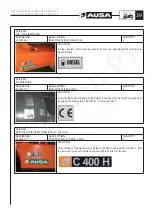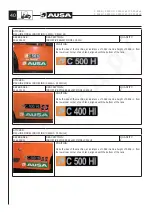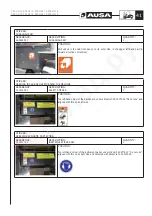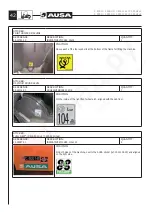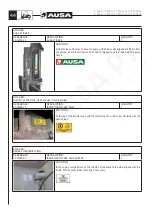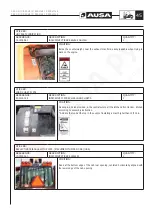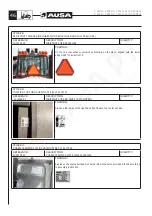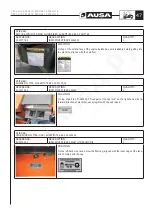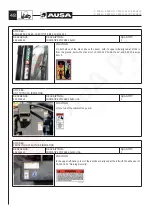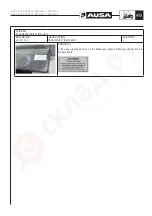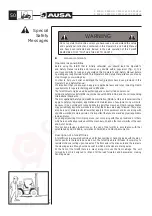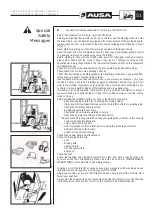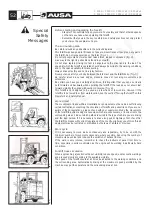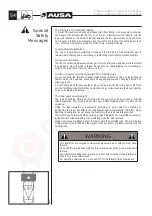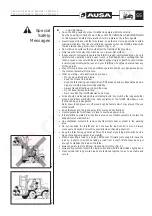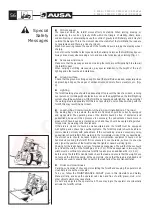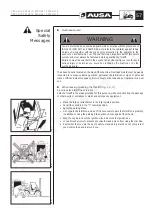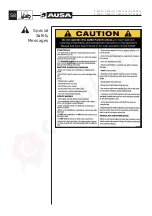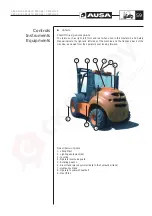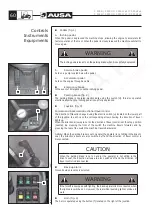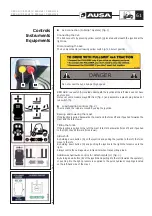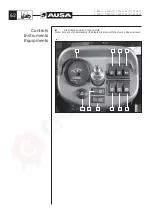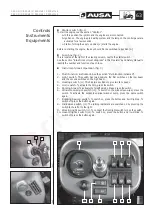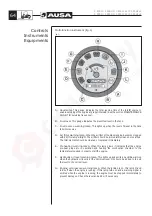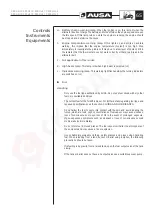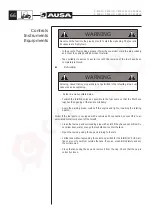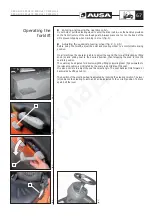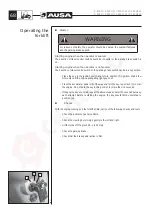
Driving in reverse
Ensure good visibility of the path to be taken. If the load being carried obstructs visibility,
drive in reverse with the utmost of caution.
Before reversing, the operator should ensure that this does not involve risks for the
forklift, people or objects in the surrounding area
(fig. 1)
.
Driving on gradients
Special care should be taken when driving on gradients: move slowly, avoid placing
the machine across the gradient and do not work on higher gradients than those
recommended.
The maximum permitted gradient does not imply that it is possible to manoeuvre here in
absolute safety under full load, ground and operating conditions.
Gradients should be descended in reverse, with the load facing the direction of greatest
stability
(fig. 2)
.
Rudiments of static equilibrium
In order that the forklift is able to handle loads in a stable and safe manner, certain
equilibrium conditions must exist and be maintained between the load and the machinery.
Therefore, the forklift is fitted with counterweights at the rear. These are designed to
compensate for the weight of the load being carried, as long as the centre of gravity
of the load and the forklift are within certain established limits. In order to calculate the
values of the transportable weight and the position of the centre of gravity permitted
for the forklift see the Load Charts in the section
“Operating the Machine”
on this
Operator’s and Safety Manual .
Rudiments of dynamic equilibrium
While the forklift is moving, and as it gains speed, the equilibrium conditions of the
load-forklift unit are modified as the centre of gravity shifts. This is accentuated on lifting
loads, turning, braking, etc. In these conditions it is necessary to take the utmost care
to ensure that the centre of gravity of the load is maintained within the specifications
showed on the load chart plate.
Static equilibrium of a conventional forklift
The forklift counterweight produces a situation of imbalance when the forklift is unloaded.
The centre of gravity is maintained low and close to the rear of the forklift. When the load
is collected, the imbalance is corrected and the centre of gravity shifts forward. If the
load is within the margins given on the load chart, equilibrium is maintained. As the
load is lifted, the centre of gravity also rises, shifting upwards. At the moment that the
centre of gravity shifts beyond the forklift, the equilibrium is lost and the forklift becomes
unstable. Therefore, the forklift should not move while the load is raised.
Stability
Do not carry unstable or loose loads, or loads which are oversized with respect to the
forklift. If very large or wide loads must be carried, every precaution must be taken to
prevent bumps or other possible accidents.
When carrying out lifting manoeuvres, particularly at height, ensure that the forklift is on
stable ground as levelled as possible.
Do not drive over objects which may endanger the stability of the machine.
C 400 H / C 400 HI / C 400 H x4 / C 400 HI x4
C 500 H / C 500 HI / C 500 H x4 / C 500 HI x4
53
(fig. 1)
(fig. 2)
Special
Safety
Messages

